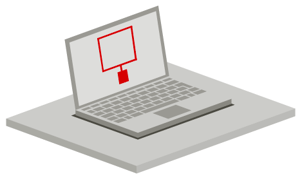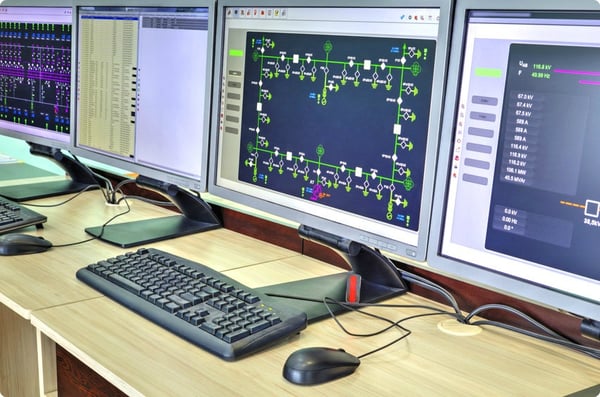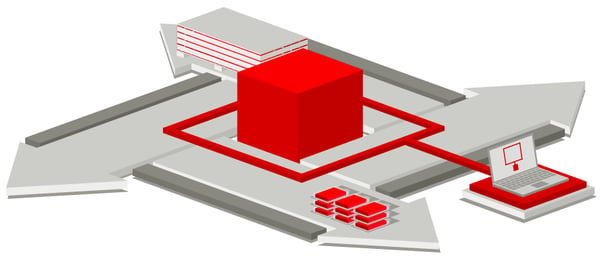Your success likely depends on your ability to design and produce quality products for your customers. They have high standards and they expect your products to meet those standards every time. How do you ensure that your production process will always meet those high-quality benchmarks?
You probably tackled that challenge in the product design phase. Perhaps your engineers used software and other technology to design the product to meet quality specifications. Maybe you designed an automated production process that ensures that you meet those specs on nearly every product. On the backend, you may compare every final product to the original design to look for potential flaws.
"You can virtually test your package against temperature changes, adverse moisture conditions, excessive movement in transit, and more."
Shouldn’t your packaging go through the same rigorous design and quality assurance process? Many manufacturers and industrial companies assume that their packaging partners have invested in the most technologically-advanced design software and tools to ensure quality. That isn’t always the case.
Some packagers design their crates by hand. Others have a general set of specifications, but they don’t have an automated process to ensure those specs are met every time. Others don’t have the backend quality checks to compare the final product to the original design.
How do you make sure you are receiving the appropriate level of effort in the design stage? One way is to ask what software your packaging partner uses to design your crates and to guide the production process.
One of the most effective tools is engineering software. Here at Deufol, we utilize a proprietary crate engineering software to create a packaging blueprint that addresses every last detail, from measurements to materials to production process.
Working with a packaging partner that doesn’t use crate engineering software? Or are you producing your own packaging in-house without software? If so, you may want to reconsider your approach. You might be missing out on these three important benefits.
1. Risk Mitigation
 What risks pose the biggest threats to your product while it is packaged? Is it moisture, humidity, and other elements? Or is it sunshine or even extreme changes in temperature? Perhaps it is excessive volatility and movements while in transit?
What risks pose the biggest threats to your product while it is packaged? Is it moisture, humidity, and other elements? Or is it sunshine or even extreme changes in temperature? Perhaps it is excessive volatility and movements while in transit?
You likely know which risks are most likely to happen and which threats could potentially cause the most damage. The question is how you best protect your product against those risks.
When your package is designed with engineering software, you can see how your package design will hold up against those threats. You can virtually test your package against temperature changes, adverse moisture conditions, excessive movement in transit, and more. You can even create a scale prototype of your crate and test that in the real world. When you’re using hand-drawn sketches or other technologically-rudimentary development systems, you can’t be completely confident that you have minimized risks.
2. Production Consistency
You know better than anyone how even the smallest production fluctuations can impact quality, customer satisfaction, and your bottom line. If you’re producing industrial parts, aviation equipment, mechanical materials, or any number of other manufacturing goods, you know that the specs matter. Even a differential of a fraction of a millimeter could be enough to make a product defective, causing you to replace the item at cost and losing goodwill with your customer.
The same is true in packaging. A crate can be designed to eliminate or minimize all threats. However, if the production doesn’t consistently align with the design, all that planning will be for naught.
"Consistent packaging production starts with detailed and accurate design."
Crate engineering software feeds the package design and specs directly to the production team so they’re not “eyeballing” it or using their best judgment. They have clear, detailed guidance on exactly how the package should be built and what specs it has to meet.
On the backend, the quality assurance team can then pull the finished package and compare it to the original design. If something’s off, they can quickly identify the root cause because they have the detailed design readily available. Consistent packaging production starts with detailed and accurate design. To achieve that level of design quality, you have to have the right tools in place.
3. Automation Cost-Benefits
When it comes to cost, your packaging is essentially an extension of your product. It’s a part of your per-product cost, and it can have a major impact on your margins. Obviously, a labor-heavy manual production process will drive up your packaging costs and suppress your profitability.
However, an automated process can cut down on the need for labor, reduce man hours, and protect your margins. That’s especially true if you need a large volume of packaging.
The problem with an automated process is that the production line has to be guided by detailed instruction. You have to feed the equipment and the technology with accurate instruction to get the automated output you want.
That’s where crate engineering software plays a role. After using the software in the design phase, you can then use the technology to integrate that design into your automated production process. That means you can be confident that your production process will manufacture packaging that is completely aligned with your design and specifications.
You don’t need excessive manual input or high labor costs. Instead, the package is designed and automatically produced on a fast schedule in complete alignment with your quality specifications and design.
Are you taking advantage of the latest technology to design and produce your packaging? What software does your packaging partner use? If you’re not sure, now may be the time to reassess your packaging strategy. You may be exposing your product to unnecessary risks or even hurting your bottom line. Consider a packaging partner that uses crate engineering software to eliminate risks and protect your margins.







Let Us Know What You Thought about this Post.
Put your Comment Below.